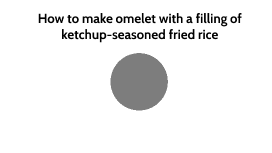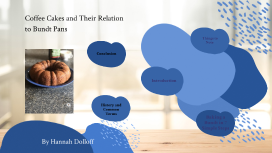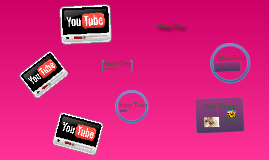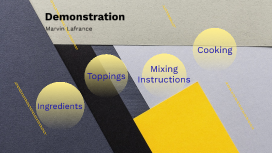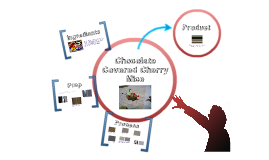Demonstration Presentation
Transcript: Speech Spring 2019 Fanny Rodriguez Basic Spanish for Tourists Spanish Greetings Basic Greetings Basic Greetings Good morning — Buenos días (bway nos dee ahs) Good afternoon — Buenas tardes (bway nahs tar days) Good evening — Buenas noches (bway nahs noh chayss) Hola (oh lah) is “hi” and you can say that with people you know. ¿Cómo está? (coh moh es tah) is “how are you?” If they ask you how you are, you can say “good, thank you”, Bien gracias (bee ayn, grah cee ahs) Don’t ever forget: Please — Por favor (por fah vohr) — and Thank you — Gracias (grah cee ahs). These are VERY IMPORTANT words in Spanish. Socializing Socializing When you are introduced to someone, you say "Mucho gusto" (moo choh goos toh) and they will say the same thing back to you. It means, “nice to meet you.” You can also ask: ¿Habla inglés? (ahblah een glays?) — Do you speak English You can go far with some very easy-to-remember words and phrases. You can always use “I want,” “I like,” “Do you have…?” and if you don’t know the noun, you can simply point at the object. Basic Spanish Vocabulary I want, I don’t want Yo quiero, yo no quiero (yoh kee ayr oh, yoh noh kee ayr oh) I would like (more polite) — Me gustaría (may goo stah ree ah) Where is — ¿Dónde está? (dohn des tah) How much does it cost — ¿Cuánto cuesta? (cwahn toh cways tah)? What time is it? — ¿Qué hora es? (kay orah ess)? Do you have? — ¿Tiene? (tee ayn ay)? I have, I don’t have — Yo tengo, yo no tengo (yoh tayn goh, yoh noh tayn goh) I understand, I don’t understand — Yo entiendo, yo no entiendo (yoh ayn tee ayn doh, yoh noh ayn tee ayn doh) Do you understand? — ¿Entiende? (ayn tee ayn day)? Simple Spanish Verbs Simple Spanish Verbs Where is, I want and I need! You can say a lot of things with very simple verbs. I want a hotel, I want a taxi, I need pesos. Where is the train station? The bathroom? The airport? The fact of the matter is that you can say a lot using” I want,” “I need,” “I can,” “I may,” or “where is,” and then you just need to supply a noun. It may not be the sophisticated way you speak in English, but you will be understood. I want a ticket, a hotel, a taxi Yo quiero un boleto, un hotel, un taxi (yoh kee ayr oh oon boh lay toh, oon oh tayl, oon tahk see) Asking for Directions How do I get there from here? If you get a bit lost or unsure of how to get somewhere, you need some simple ways of finding how to find your way. “Where is” is the simplest way of asking. The phrase is “¿dónde está?” (dohn des tah) and here are some examples: Where is the train station (or bus station) ¿Dónde está la estación de ferrocarril? (dohn des tah la ays ta see ohn day fay roh cahr reel) or “autobuses” (ow toe boos ehs). Where is a restaurant? — ¿Dónde hay un restaurante? (dohn day eye oon rays tore rahn tay)? Where is the exchange? ; Where is a bank? — ¿Dónde hay una casa de cambio? (dohn days tah oon ah cah sah day cahm bee oh) ¿Dónde está el banco? (dohn days tah ayl bahn coh)? – Money — Dinero (dee nayr oh). Where is? The street … ? — ¿La calle … ? (lah cah yay)? Where is the bathroom? — ¿Dónde está el baño? (dohn days tah el ban yoh)? I’m looking for a hotel — Busco un hotel (yoh kee ayr oh oon oh tel) I need — Yo necesito (yoh nay say see toh). Very useful, and you can supply the noun. I need a hotel / a room / a room with a bathroom Yo necesito un hotel / un cuarto / un cuarto con baño (yoh nay say see toh oon oh tayl, oon cwar toh, oon cwar toh cohn ban yoh) — Where is? Once you have asked a question, someone will answer you in Spanish. Here are some simple directions that someone may give you, to turn right, to turn left, or to go straight ahead. Listen for these key words: Right — A la derecha (a lah day ray chah) Left — A la izquierda (ah lah eez kee ayr dah) Straight ahead — Derecho (Day ray choh) At the corner — En la esquina (a lah ays kee nah) In one, two, three, four blocks A una cuadra, a dos, tres, cuatro cuadras (a oona dohss, trayss, cwah troh cwah drahs) Directions Understanding Directions Probably the most useful phrases you will need are in a restaurant. Ask for anything by using "quiero" (kee ayr oh) or quisiera (kee see ayr oh) — “I want” or “I would like.” And remember to say "por favor" and "gracias!" What do you want to eat or drink? At a Restaurant A table — Una mesa (oona may sah) A table for two, three, four — Una mesa para dos tres, cuatro (oona may sah pah rah dohss, trays, kwah troh) A menu — Un menú (oon may noo) Calling a waiter or waitress — ¡Señor! or ¡Señorita! (say nyor, say nyor eetah) The check — La cuenta (lah cwayn tah) Inside Soup — Sopa (soh pah) Salad — Ensalada (ayn sah lah dah) Hamburger (Another necessity!) — Hamburguesa (ahm boor gay sah) With ketchup, mustard, tomato, lettuce — Con salsa de tomate, mostaza, tomate, lechuga (cohn sahl sah day toh mah tay, mohs tah sah, toh mah tay, lay choo gah) An appetizer — Una entrada (oona ayn trah dah) Dessert — Un postre (oon pohs tray) A drink — Una bebida (oona bay bee dah) Water — Agua (ah






